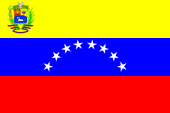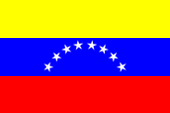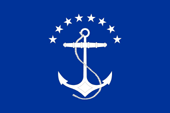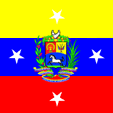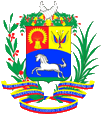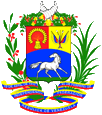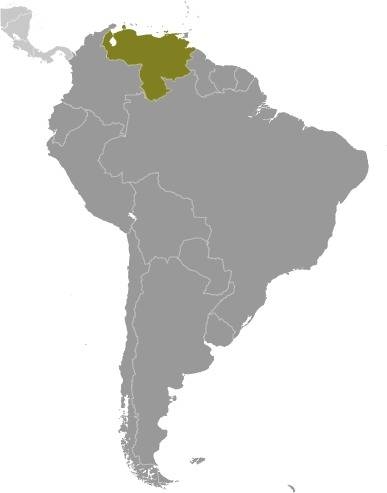|
|
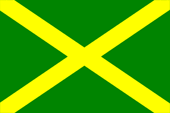
1777–1810,
Flagge des Generalkapitanats
– flag of the General-Captaincy
  
|
|
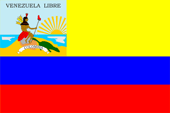 |
1806,
Flagge von – flag of
Francisco de Miranda,
Quelle/Source nach/by: Flags of the World
  
|
|
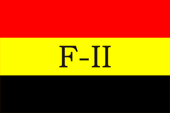 |
1810–1812,
Flagge der loyalen Regierung
– flag of the loyal government,
Quelle/Source nach/by: Flags of the World
  
|
|
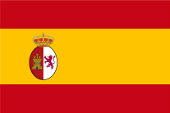 |
1813–1816,
Flagge Spaniens
– flag of Spain
  
|
|
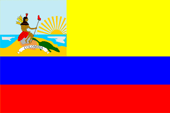 |
1811–1814,
Flagge der aufständischen Regierung
– flag of the insurgent government,
Quelle/Source nach/by: Flags of the World
  
|
|
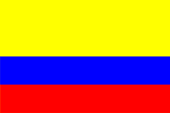 |
1814–1817,
Flagge der aufständischen Regierung
– flag of the insurgent government,
Quelle/Source nach/by: Flags of the World
  
|
|
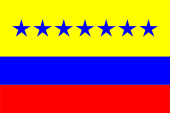 |
1817–1819,
Nationalflagge – national flag,
Variante/variant,
Quelle/Source nach/by: Flags of the World
  
|
|
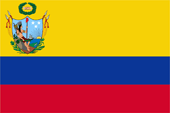 |
1819–1820,
Nationalflagge Großkolumbiens
– flag of Great Colombia,
Quelle/Source nach/by: HansenBCN [CC BY-SA 4.0], via Wikimedia Commons
  
|
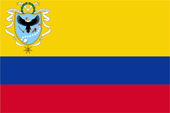
1820–1821,
Nationalflagge Großkolumbiens
– flag of Great Colombia,
Quelle/Source nach/by: Milenioscuro [CC BY-SA 3.0], via Wikimedia Commons
  
|
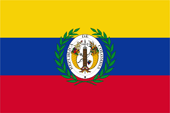
1821–1830,
Nationalflagge Großkolumbiens
– flag of Great Colombia,
Quelle/Source nach/by: Milenioscuro [CC BY-SA 3.0], via Wikimedia Commons
  
|
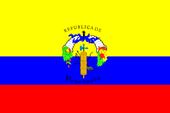
1830–1836,
Nationalflagge – national flag
  
|
|
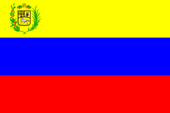 |
1836–1859,
Nationalflagge – national flag
  
|
|
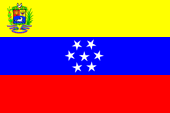 |
1859–1905,
National- und Handelsflagge
– national and merchant flag
  
|
|
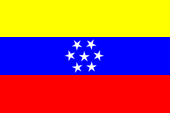 |
1863–1905,
Staatsflagge – state flag
  
|
|
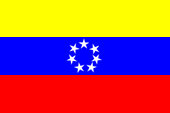 |
1905–1930,
National- und Handelsflagge
– national and merchant flag
  
|
|
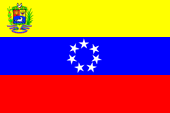 |
1905–1930,
Staats- und Marineflagge
– state and naval flag
  
|
|
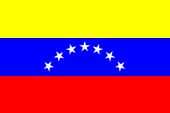 |
1930–2006,
National- und Handelsflagge
– national and merchant flag
    
|
|
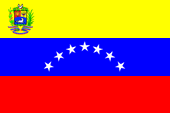 |
1930–1942,
1954–2006,
Staats- und Marineflagge
– state and naval flag
    
|
|
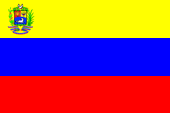 |
1942–1954,
Staats- und Marineflagge
– state and naval flag
  
|
|
 |
1954–2006,
Staats- und Marineflagge
– state and naval flag,
Seitenverhältnis – ratio = 2:3
  
|
|
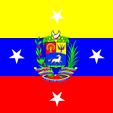 |
1930–2006,
Standarte des Präsidenten
– standard of the president,
Seitenverhältnis – ratio = 1:1
  
|
 |
